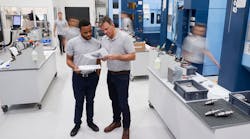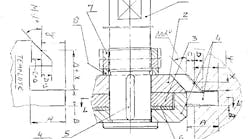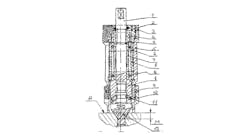The U.S. Commerce Dept.'s National Institute of Standards and Technology has allocated $71 million to 20 different projects it identifies as “innovative, high-risk research in new technologies that address critical national needs.” These projects, to be funded under NIST’s Technology Innovation Program (TIP), involve various emerging manufacturing concepts.
One project to receive financing is Third Wave Systems Inc.’s effort, titled “Integrated Multiscale Modeling for Development of Machinable Advanced Alloys and Corresponding Component Machining Processes.” This is a three-year effort to combine alloy developers’ micromechanical models with manufacturers’ physics-based machining models, in order to create highly machinable, advanced alloys.
The three-year project will receive a total of $3.17 million from NIST.
“This is an exciting and important initiative for Third Wave and our customers,” stated chief technical officer Troy Marusich. “There presently exists a unique opportunity to capitalize on the confluence of physics-based modeling and high-performance computing to propel advanced alloy development and manufacturing processes. The resulting capability will allow the development of new more machinable alloys in less time, while simultaneously establishing machining processes and tooling.”
Third Wave Systems said its project has potential to affect various sectors of the machining industries, including cutting tool manufacturers, machine shops, and OEMs. Research activity will begin in February 2010, with, support for the project from Cessna, General Dynamics Ordnance & Tactical Systems, GE Aviation, Kennametal, Pennsylvania Steel Corp., and Rolls-Royce.
Receiving a $10.1-million, five-year grant from NIST is an interdisciplinary team of researchers led by University of Wisconsin-Madison mechanical engineering professor Xiaochun Li. They intend to implement nanotechnology into standard metalcasting technologies, to produce aluminum and magnesium nanocomposites.
Industrial applications are increasing for lightweight alloys, and nanoparticles are viewed as a way to reinforce the materials. The research will seek ways to effectively disperse the particles to create a metal matrix.
In another NIST grant, a metal recycler and its research partners will receive $11.5 million to develop and commercialize a suite of optoelectronic inspection technologies to accurately identify and sort aerospace metals (e.g., titanium, nickel/cobalt superalloys) at ultra-high speeds. A group led by wTe Corp. indicate this will mean these high-value metals can be recycled more cost-effectively, and they indicate the research will improve melting furnace capacity by measuring composition on site, in real time.
"These projects will develop new technology and material that will play a critical role in modernizing infrastructure and developing the manufacturing sector across the country," stated Dennis Hightower, deputy secretary of the U.S. Commerce Department, said in a statement.



